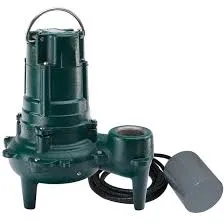Romanian
- Afrikaans
- Albanian
- Amharic
- Arabic
- Armenian
- Azerbaijani
- Basque
- Belarusian
- Bengali
- Bosnian
- Bulgarian
- Catalan
- Cebuano
- Corsican
- Croatian
- Czech
- Danish
- Dutch
- English
- Esperanto
- Estonian
- Finnish
- French
- Frisian
- Galician
- Georgian
- German
- Greek
- Gujarati
- Haitian Creole
- hausa
- hawaiian
- Hebrew
- Hindi
- Miao
- Hungarian
- Icelandic
- igbo
- Indonesian
- irish
- Italian
- Japanese
- Javanese
- Kannada
- kazakh
- Khmer
- Rwandese
- Korean
- Kurdish
- Kyrgyz
- Lao
- Latin
- Latvian
- Lithuanian
- Luxembourgish
- Macedonian
- Malgashi
- Malay
- Malayalam
- Maltese
- Maori
- Marathi
- Mongolian
- Myanmar
- Nepali
- Norwegian
- Norwegian
- Occitan
- Pashto
- Persian
- Polish
- Portuguese
- Punjabi
- Romanian
- Russian
- Samoan
- Scottish Gaelic
- Serbian
- Sesotho
- Shona
- Sindhi
- Sinhala
- Slovak
- Slovenian
- Somali
- Spanish
- Sundanese
- Swahili
- Swedish
- Tagalog
- Tajik
- Tamil
- Tatar
- Telugu
- Thai
- Turkish
- Turkmen
- Ukrainian
- Urdu
- Uighur
- Uzbek
- Vietnamese
- Welsh
- Bantu
- Yiddish
- Yoruba
- Zulu
Telephone: +86 13120555503
Email: frank@cypump.com
nov. . 10, 2024 18:25 Back to list
Compact Slurry Pump Solutions for Efficient Material Transport and Handling
Understanding Small Slurry Pumps A Comprehensive Overview
Slurry pumps play a vital role in various industrial applications, particularly in mining, construction, and waste management. Among these, small slurry pumps are increasingly gaining prominence due to their versatility, efficiency, and ability to handle challenging materials. This article will delve into the features, applications, benefits, and considerations associated with small slurry pumps.
What is a Small Slurry Pump?
A small slurry pump is specifically designed to transport slurry— a mixture of solids and liquids—through pipelines. Unlike standard water pumps, which can only move clear fluids, slurry pumps are robust and resilient, equipped to handle abrasive particles, corrosive chemicals, and high-density fluids. The construction of small slurry pumps often features a rugged design, durable materials, and heavy-duty components to withstand the rigors of challenging environments.
Key Features
1. Durability Small slurry pumps are typically constructed from materials like high-chrome alloy, rubber linings, or stainless steel, allowing them to withstand wear and tear from abrasive materials.
2. Self-Priming Capability Many small slurry pumps can self-prime, meaning they can draw liquid into the pump without needing manual intervention. This feature is essential for maintaining efficiency and reducing downtime.
3. Versatile Operation These pumps can handle a wide range of slurries, including those containing sand, gravel, coal, and various waste materials from industrial processes.
4. Compact Design The smaller footprint of these pumps makes them ideal for confined spaces or applications where mobility is needed. This design also allows for easy installation and transportation.
5. Variable Speed Options Many small slurry pumps come with variable speed settings, enabling operators to adjust the flow rates and pressure according to their specific application needs.
Applications of Small Slurry Pumps
Small slurry pumps are employed in numerous industries due to their unique capabilities
. Some common applications include- Mining They are extensively used for transporting tailings and ore slurries. Their ability to handle dry solids and large particle sizes makes them invaluable in mining operations.
- Construction These pumps assist in dewatering sites, transferring concrete slurries, or moving mixed materials at construction sites.
- Waste Management Small slurry pumps are vital in the treatment of wastewater and handling sludge. They enable efficient transportation of solid-liquid mixtures in sewage plants.
small slurry pump

- Agriculture In agricultural applications, slurry pumps can move manure, which often contains solid materials. This efficient transfer helps in fertilizer application and waste management.
Benefits of Using Small Slurry Pumps
1. Efficiency Small slurry pumps are designed to minimize energy consumption while maximizing output, making them cost-effective in the long run.
2. Reduced Maintenance The robust design and materials reduce wear and tear, leading to lower maintenance costs and prolonged service life.
3. Improved Safety Handling slurries can be hazardous; using small slurry pumps can reduce the need for manual handling, thus improving workplace safety.
4. Flexibility The ability to cater to various slurry types and adjust operational settings offers users the flexibility to adapt to different project requirements.
Considerations for Selection
When selecting a small slurry pump, several factors should be considered
- Type of Slurry Understanding the properties of the slurry, including particle size, density, and corrosiveness, is crucial for choosing the right pump.
- Flow Rate and Head It's essential to determine the required flow rate and the height to which the slurry needs to be pumped to avoid overloading the pump.
- Power Source Depending on the location and setup, considerations must be made concerning the power source, whether electric, hydraulic, or gas-powered.
- Budget While investing in quality pumps is important, determining a budget that meets organizational needs without compromising on performance is essential.
Conclusion
Small slurry pumps are indispensable tools across various industries, known for their resilience, efficiency, and adaptability. They tackle the complex task of transporting slurries and promise to enhance operational productivity while maintaining safety standards. As industries evolve and demand greater efficiency in handling challenging materials, the role of small slurry pumps is likely to become even more critical, driving innovation and development in this essential domain.
-
High-Performance Air Pumps for Sand & Gravel | Efficient Transport
NewsAug.03,2025
-
ISG Series Vertical Pipeline Pump - Chi Yuan Pumps Co., LTD.|Energy Efficiency, Corrosion Resistance
NewsAug.03,2025
-
ISG Series Pipeline Pump - Chi Yuan Pumps | Energy Efficiency&Compact Design
NewsAug.03,2025
-
ISG Series Vertical Pipeline Pump - Chi Yuan Pumps Co., LTD.|High Efficiency, Low Noise, Durable
NewsAug.02,2025
-
ISG Series Vertical Pipeline Pump - Chi Yuan Pumps | High Efficiency, Low Noise
NewsAug.02,2025
-
ISG Series Vertical Pipeline Pump- Chi Yuan Pumps Co., LTD.|High Efficiency&Compact Design
NewsAug.02,2025










